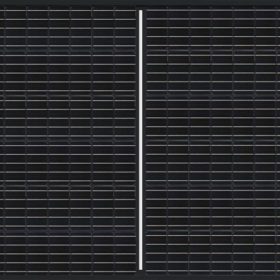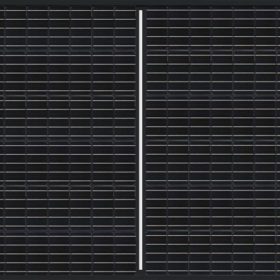Sharp unveils black, half-cut-cell module

The solar panel will be part of the half-cut-cell series recently launched by the Japanese manufacturer and the company claims it is ideal for rooftop PV projects with aesthetic requirements. The 19.0%-efficient product has a power output of 320 W.
Japanese electronics brand Sharp has launched a black, half-cut-cell, PERC, monocrystalline solar panel with a power output of 320 W.
The manufacturer said the product was intended for residential and commercial projects with aesthetic requirements
The NU-JC320B module is made of 120 half-cells measuring each 1,684 by 1,002 by 40mm. The product has power tolerance of up to 5% according to its manufacturer, with Sharp claiming the panel has a yield up to 3% higher than similar standard panels featuring full-cell architecture.
A multiple junction box design means each half of the module can function independently and the three junction boxes are each equipped with a single bypass diode in a system which is said to transfer less heat to cells, improving durability and performance.
Coating
The IEC61215 and IEC61730-certified panel features MC4 connectors made by Swiss company Stäubli and an anti-reflective front-glass coating from Canadian firm DSM. The coating, according to Sharp, reflects 1.2% less light than rival solutions.
Sharp said its module for “style-conscious commercial customers and homeowners” offers 19.0% efficiency and comes with a 25-year, linear power output guarantee and a 15-year product guarantee.
The Japanese manufacturer in January launched a PERC, monocrystalline module series featuring half-cut cells. That range followed three PERC mono products with a claimed 19.1% efficiency in April 2018. Two years ago, Sharp achieved 25.09% conversion efficiency in a cell featuring heterojunction and back-contact technology, as certified by the Japan Electrical Safety and Environment Technology Laboratories.


